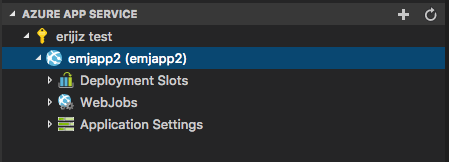* azure: Run npm audit fix * Bump version 3.1.1 -> 3.1.2 |
||
|---|---|---|
| .. | ||
| .vscode | ||
| resources | ||
| src | ||
| test | ||
| .eslintignore | ||
| .eslintrc.js | ||
| .npmignore | ||
| LICENSE.md | ||
| README.md | ||
| index.d.ts | ||
| package-lock.json | ||
| package.json | ||
| tsconfig.json | ||
README.md
VSCode Azure SDK for Node.js - Azure Utils (Preview)
This package provides common Azure utilities for Azure VS Code extensions, and is intented to be used alongside @microsoft/vscode-azext-utils.
Usage
You must call registerAzureUtilsExtensionVariables first in your extension's activate() method. The first parameter of the function passed in will always be an IActionContext, which allows you to specify custom telemetry and describes the behavior of this command. The simplest example is to register a command (in this case, refreshing a node):
registerAzureUtilsExtensionVariables(...);
registerCommand('yourExtension.Refresh', (context: IActionContext, node: AzExtTreeItem) => {
context.telemetry.properties.customProp = "example prop";
context.telemetry.measurements.customMeas = 49;
node.refresh();
});
Azure Extension Tree Data Provider
Display Azure Resources
Follow these steps to create your basic Azure Tree:
-
Create an
AzExtTreeItem(orAzExtParentTreeItem) describing the items to be displayed under your subscription:export class WebAppTreeItem extends AzExtTreeItem { public static contextValue: string = "azureWebApp"; public readonly contextValue: string = WebAppTreeItem.contextValue; private readonly _site: Site; constructor(parent: AzExtParentTreeItem, site: Site) { super(parent); this._site = site; } public get id(): string { return this._site.id; } public get label(): string { return this._site.name; } } -
Create a
SubscriptionTreeItemBasethat provides the tree items you just implemented. It must implement at leasthasMoreChildrenImplandloadMoreChildrenImpl:NOTE: Methods suffixed with
Implshould not be called directly - just implemented.export class SubscriptionTreeItem extends SubscriptionTreeItemBase { private _nextLink: string | undefined; public hasMoreChildrenImpl(): boolean { return this._nextLink !== undefined; } public async loadMoreChildrenImpl(clearCache: boolean, _context: IActionContext): Promise<WebAppTreeItem[]> { if (clearCache) { this._nextLink = undefined; } const client: WebSiteManagementClient = createAzureClient(this.root, WebSiteManagementClient); const webAppCollection: WebAppCollection = this._nextLink === undefined ? await client.webApps.list() : await client.webApps.listNext(this._nextLink); this._nextLink = webAppCollection.nextLink; return webAppCollection.map((site: Site) => new WebAppTreeItem(this, site))); } } -
Create an
AzureAccountTreeItemBasethat provides the subscriptions you just implemented. It must implement at leastcreateSubscriptionTreeItem:export class AzureAccountTreeItem extends AzureAccountTreeItemBase { public createSubscriptionTreeItem(root: ISubscriptionContext): SubscriptionTreeItemBase { return new SubscriptionTreeItem(this, root); } } -
Finally, set up the tree in your extension's
activate()method. Instantiate anAzureAccountTreeItemand add it tocontext.subscriptionssince it's a disposable. Then instantiate anAzExtTreeDataProvider, passing in your root tree item and theloadMoreCommandId(which maps the 'Load More...' node to the command registered by your extension).const azureAccountTreeItem = new AzureAccountTreeItem(); context.subscriptions.push(azureAccountTreeItem); const treeDataProvider = new AzExtTreeDataProvider(azureAccountTreeItem, "appService.loadMore"); context.subscriptions.push(vscode.window.createTreeView("azureAppService", { treeDataProvider }));
